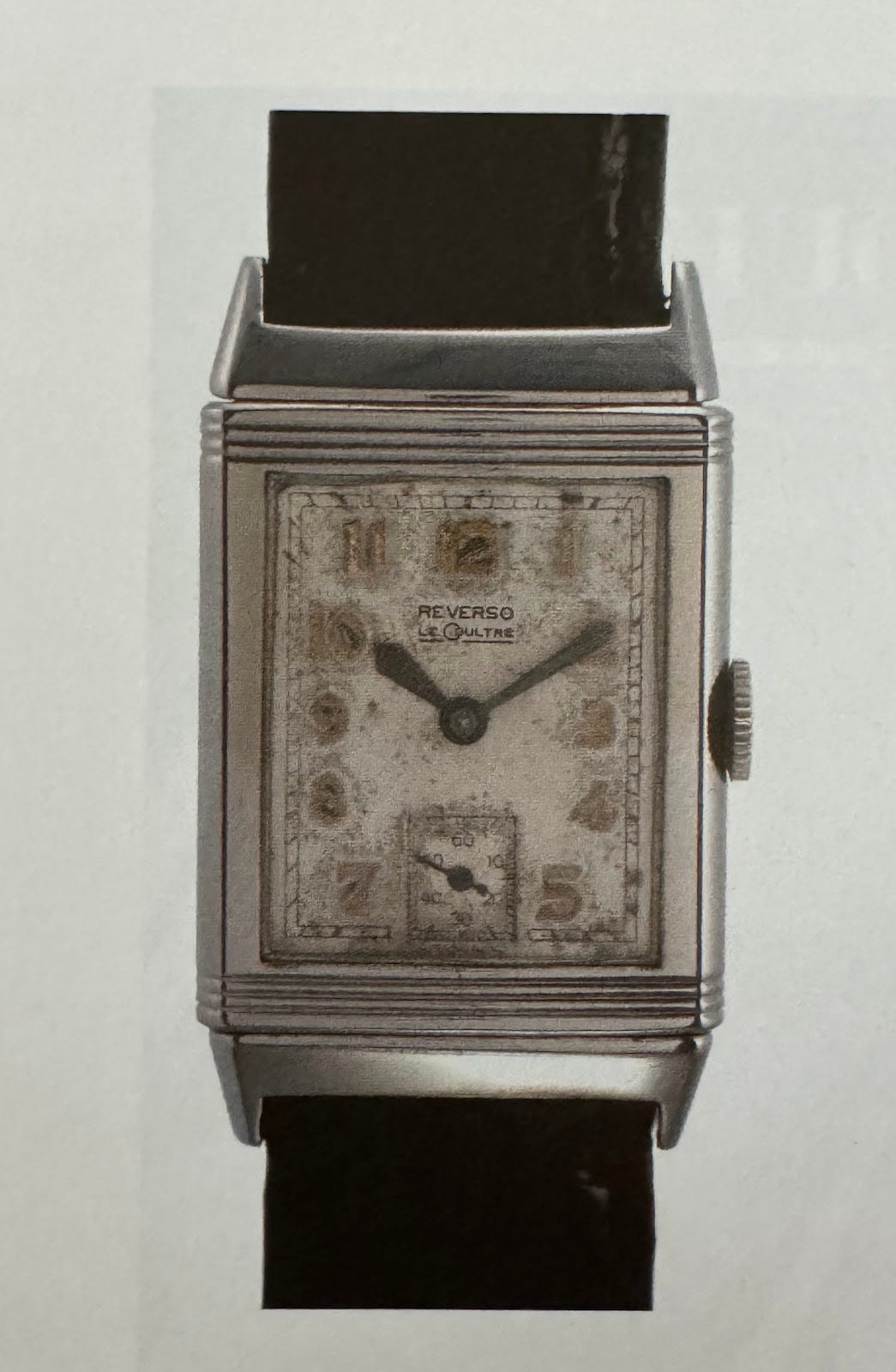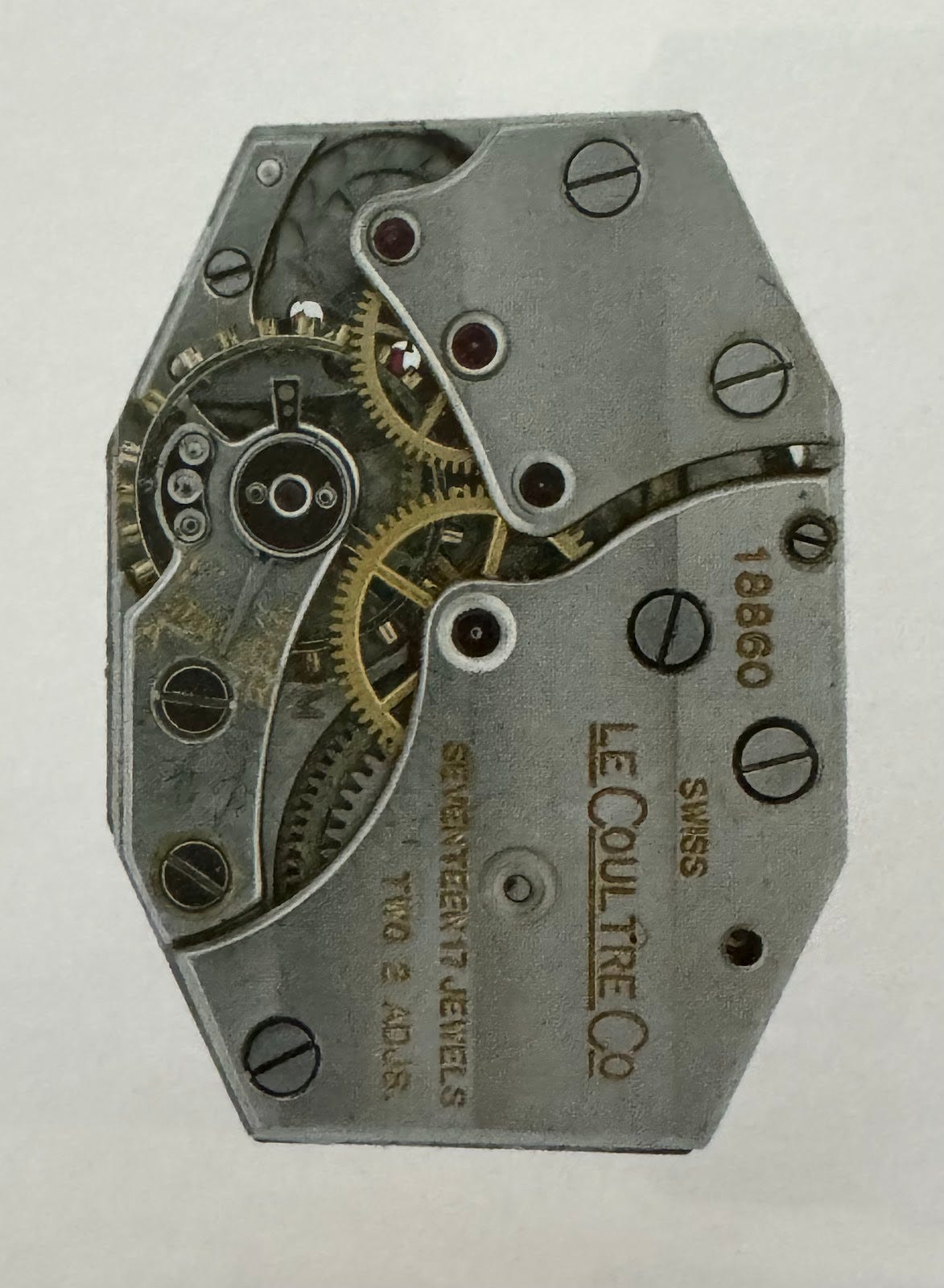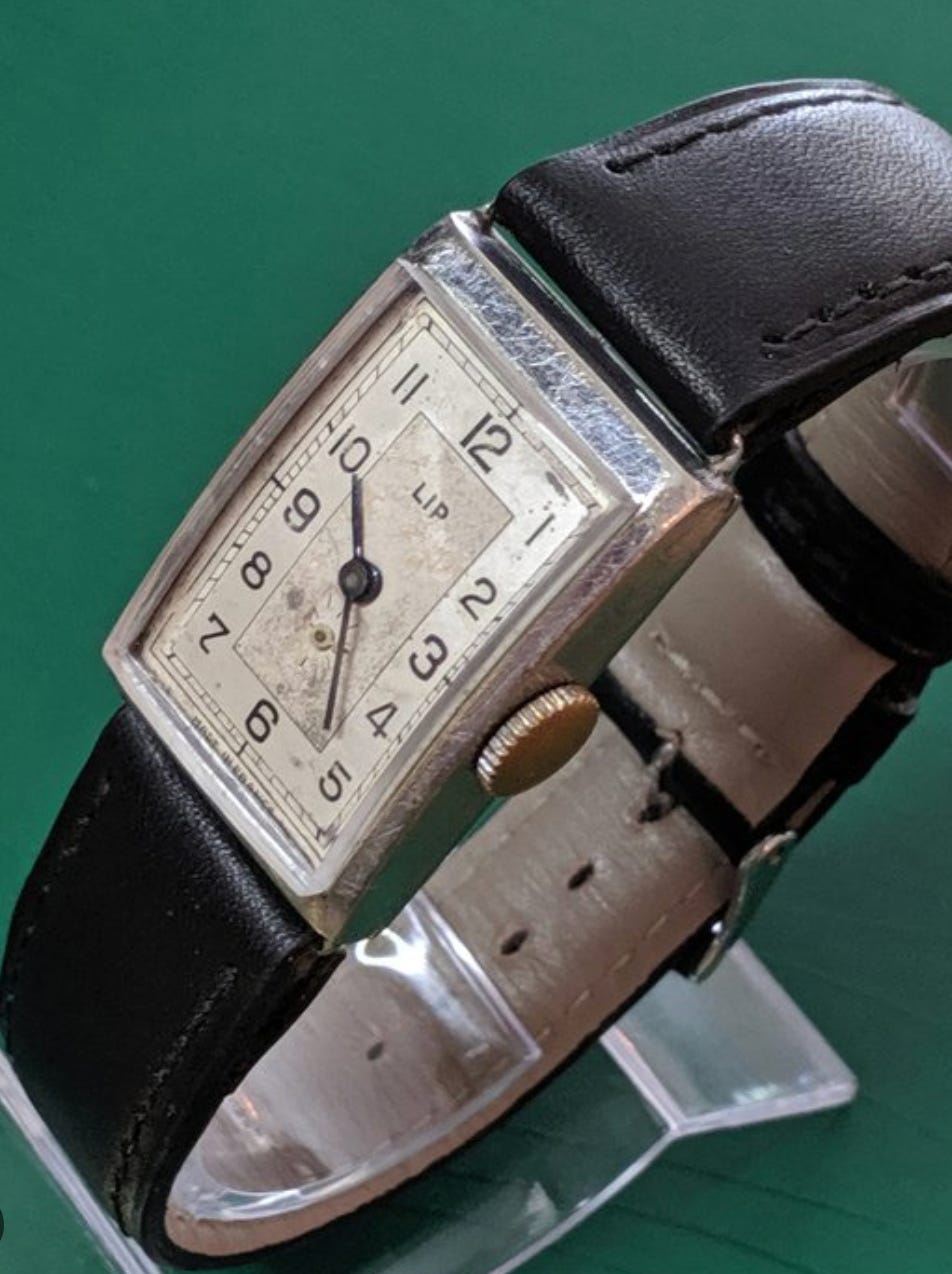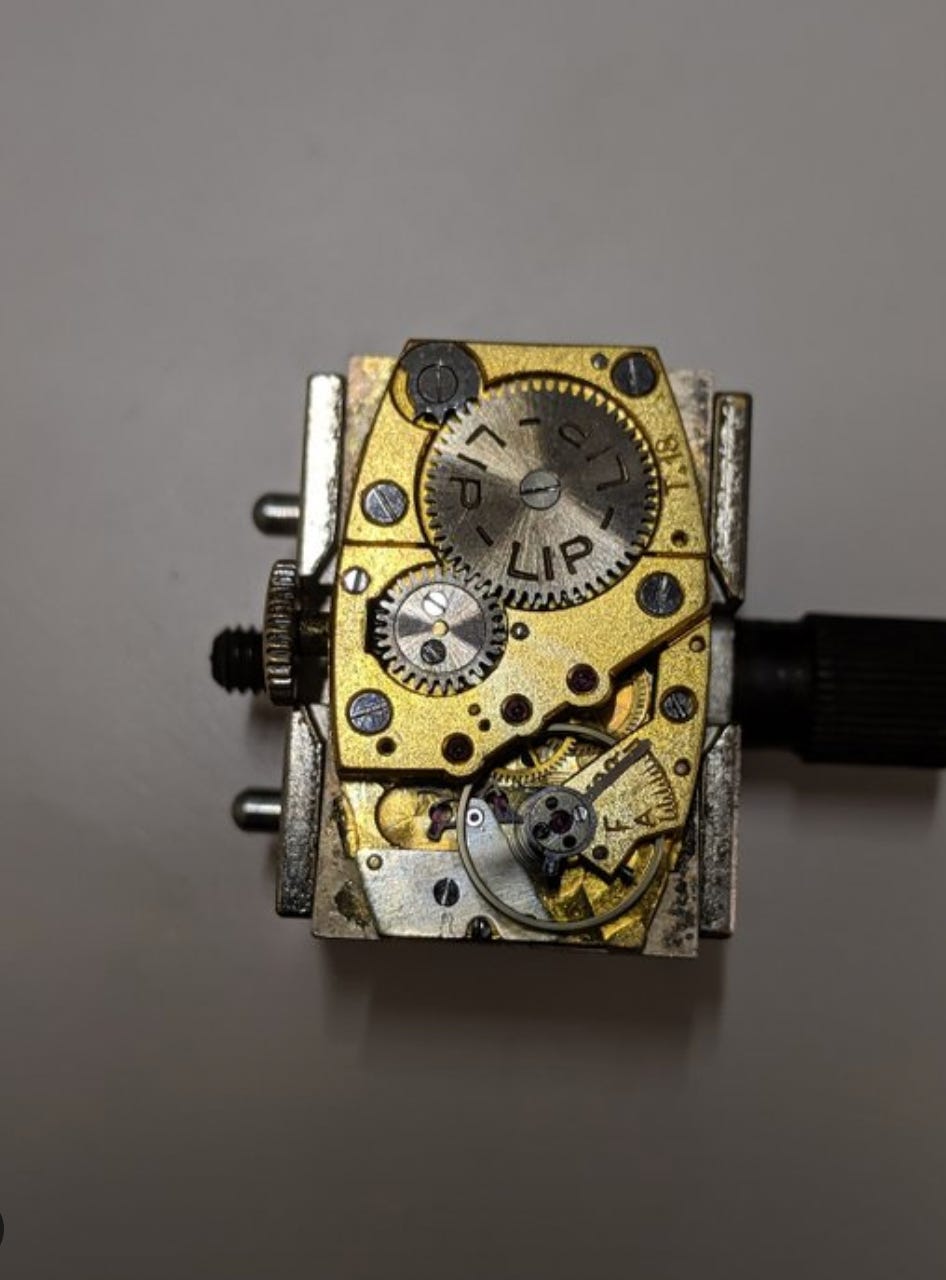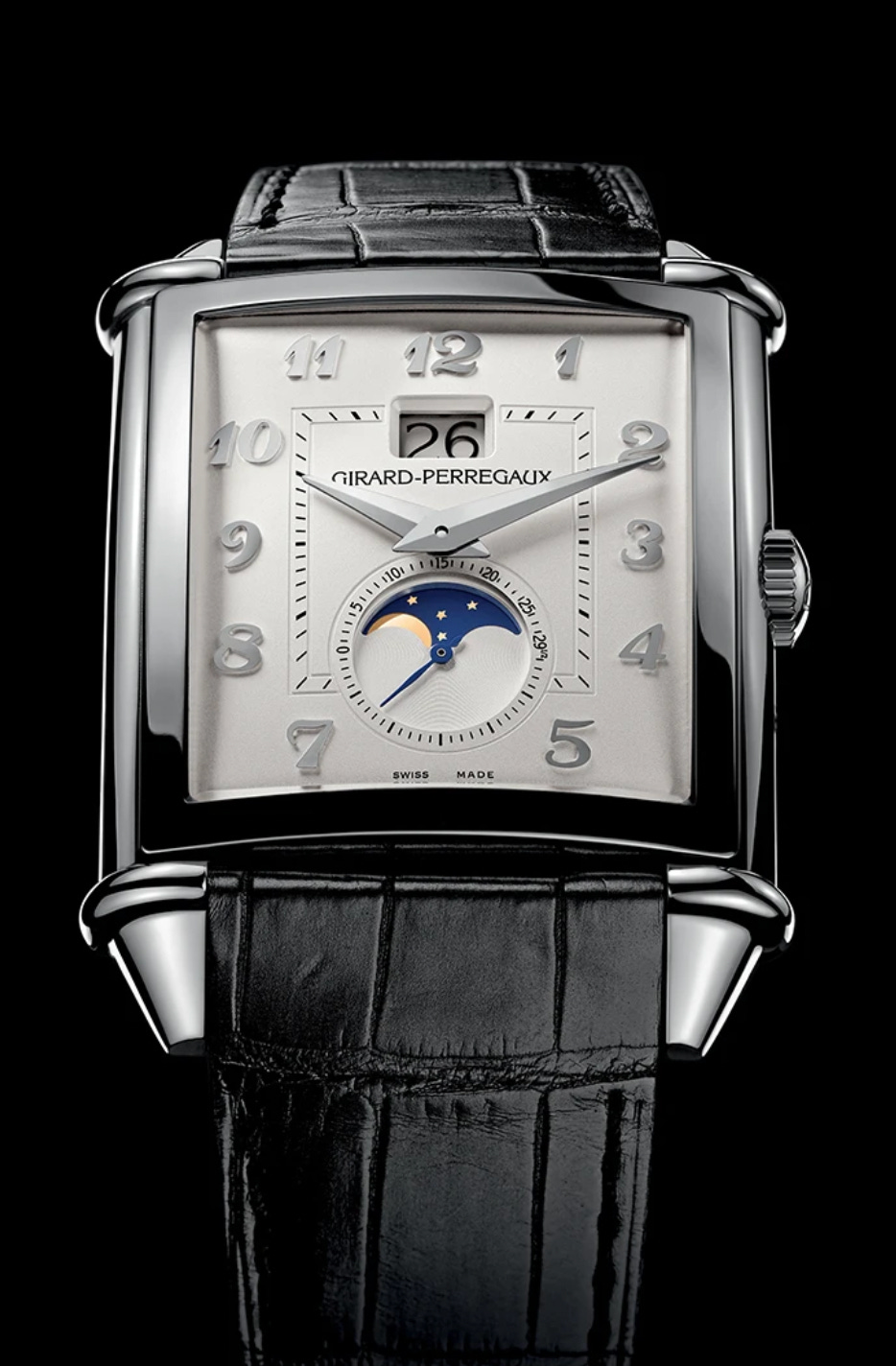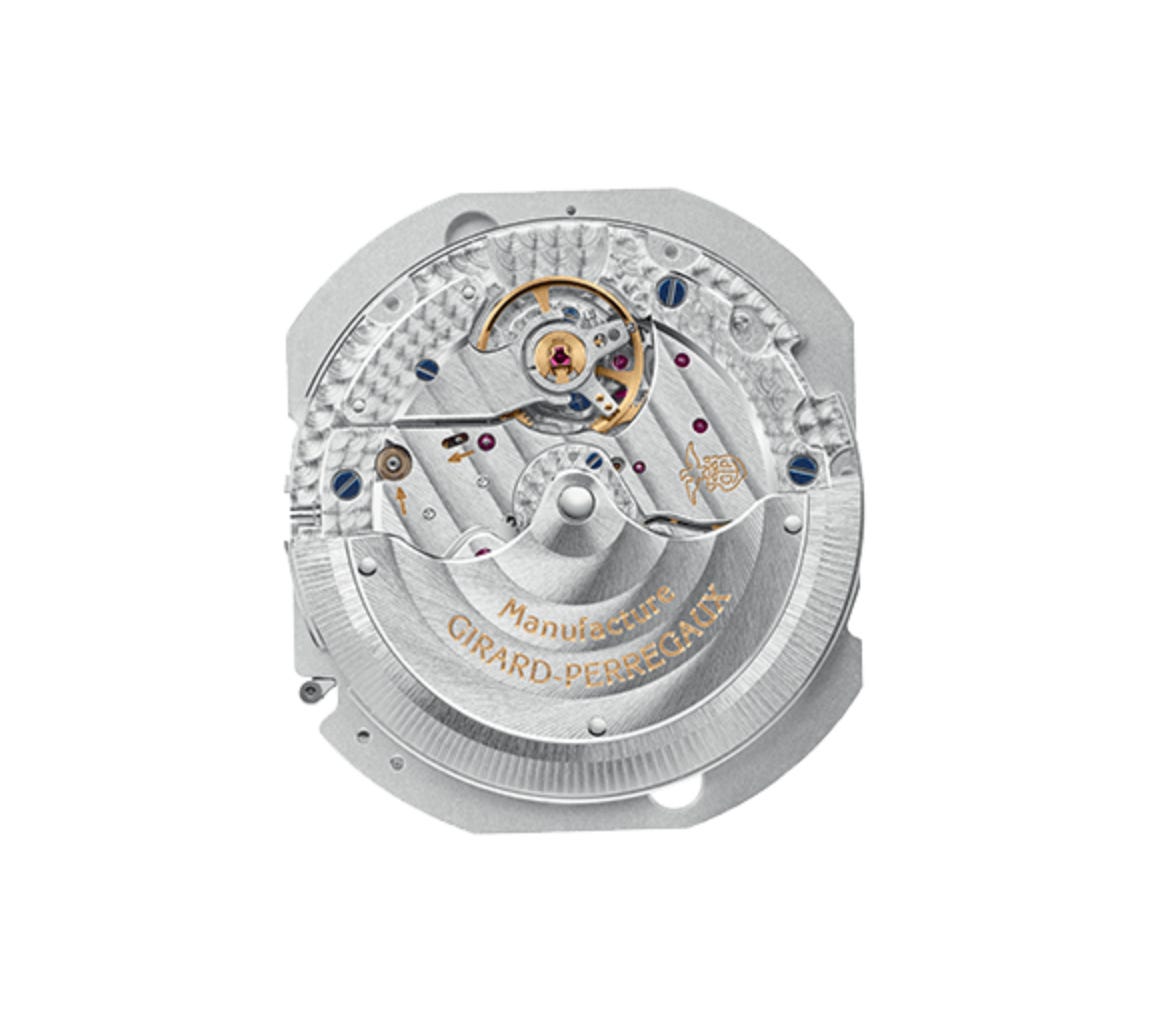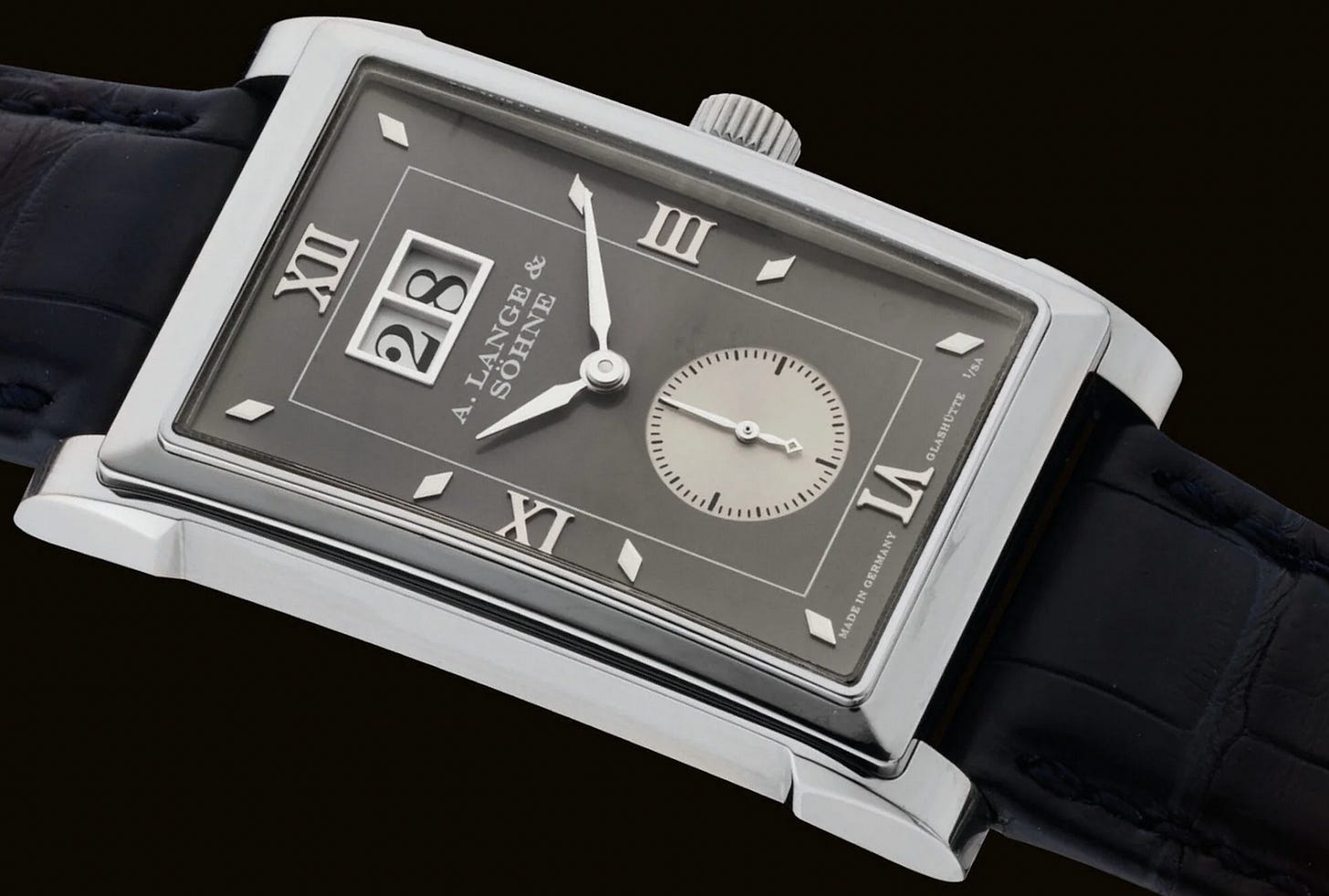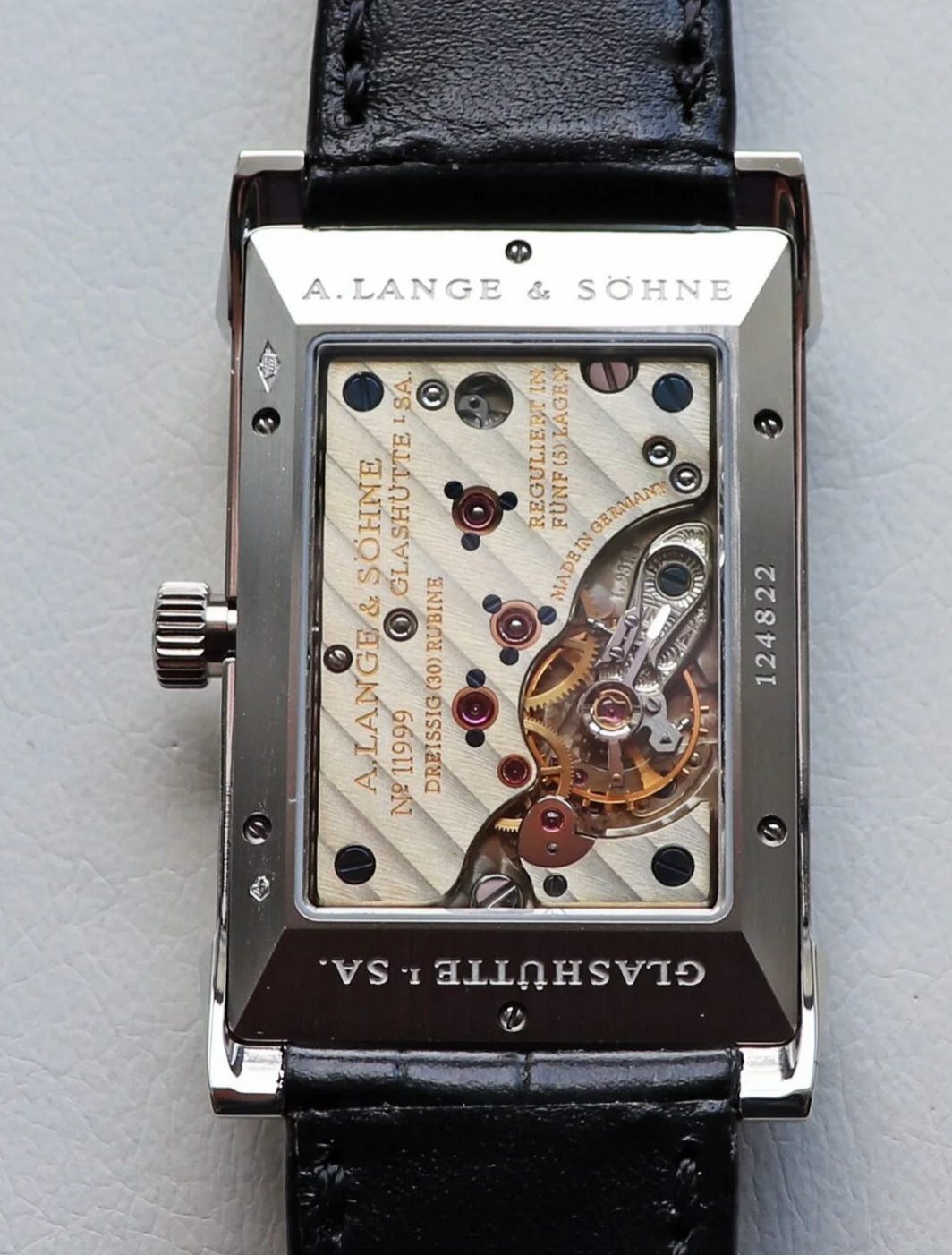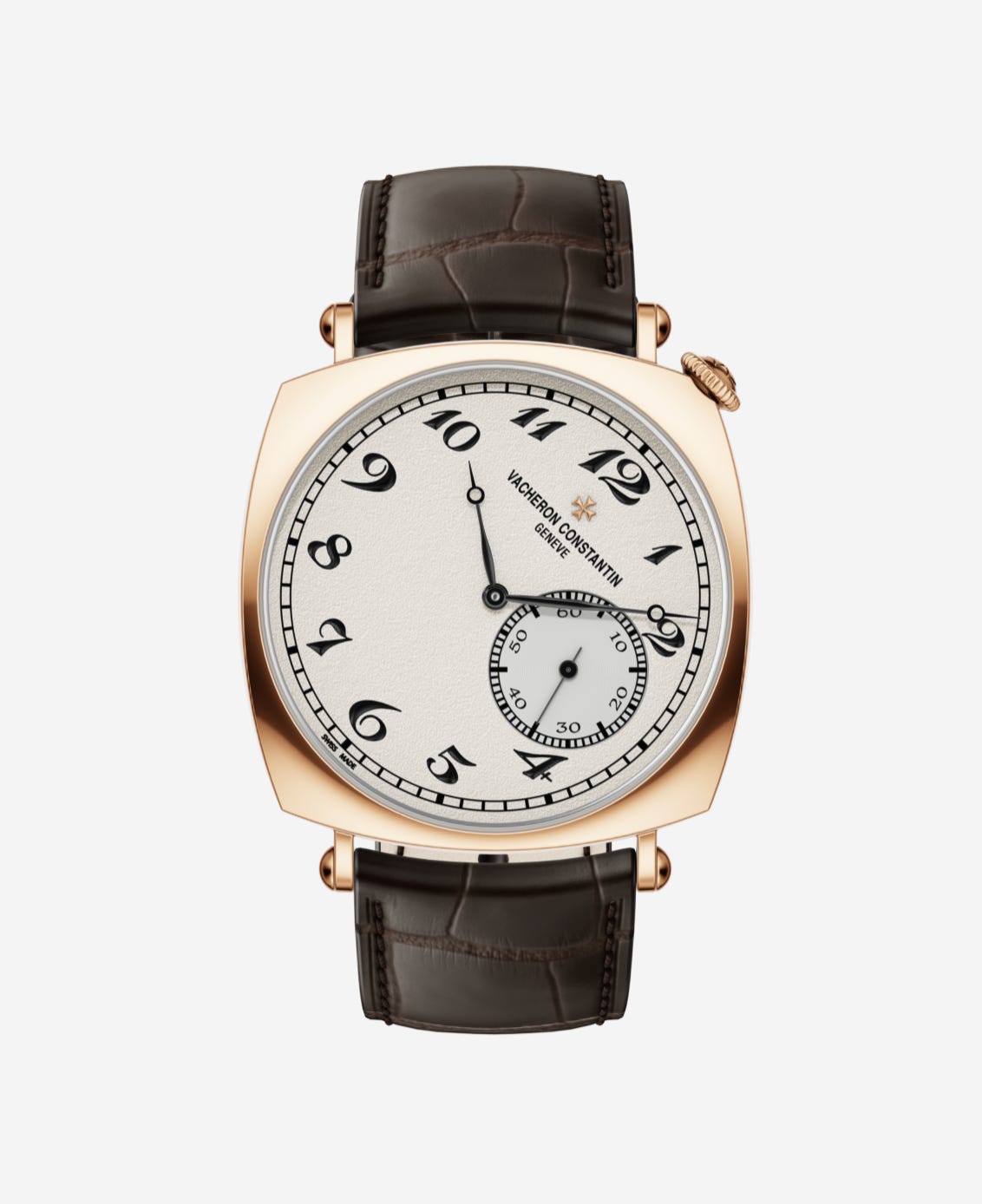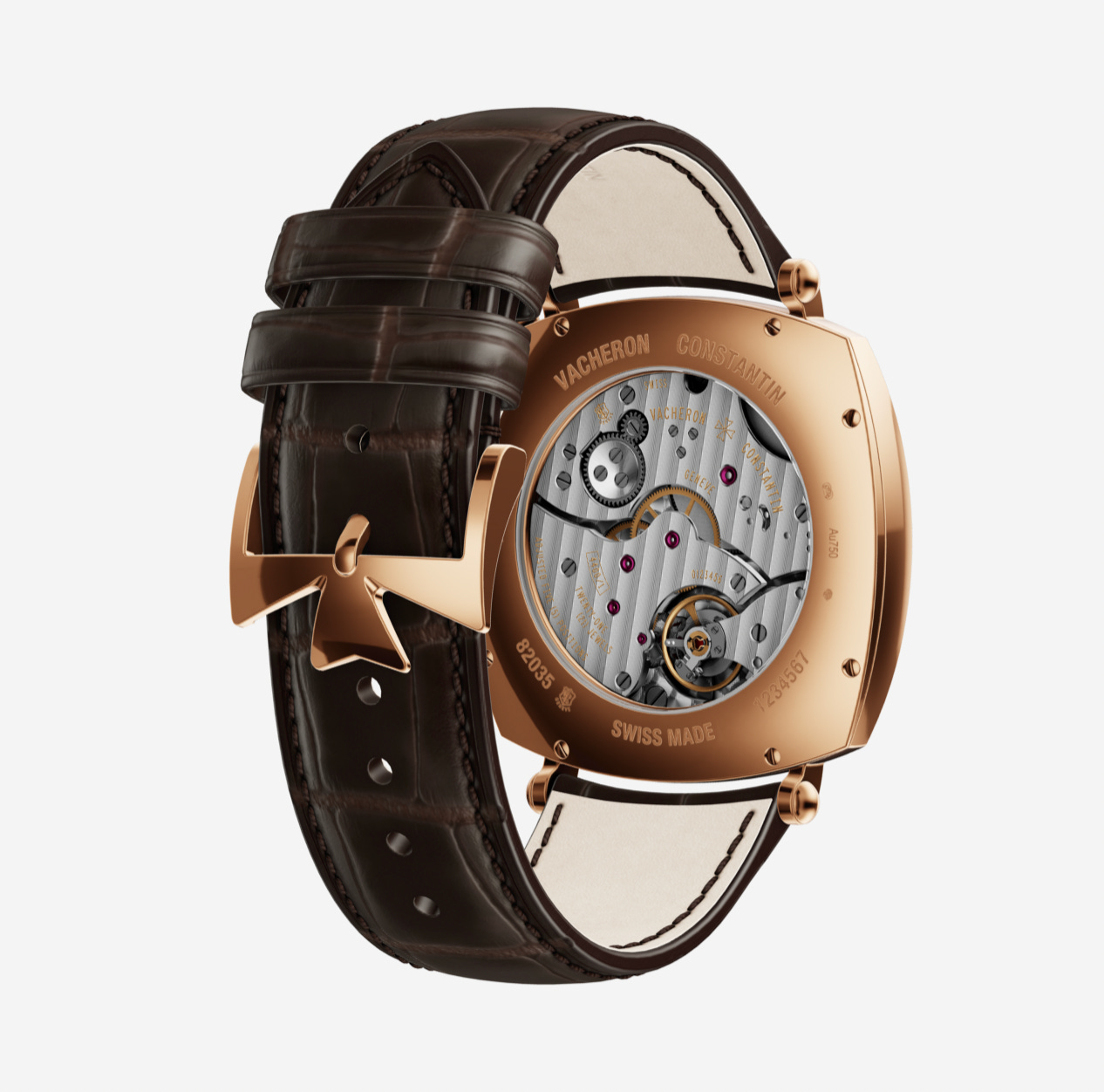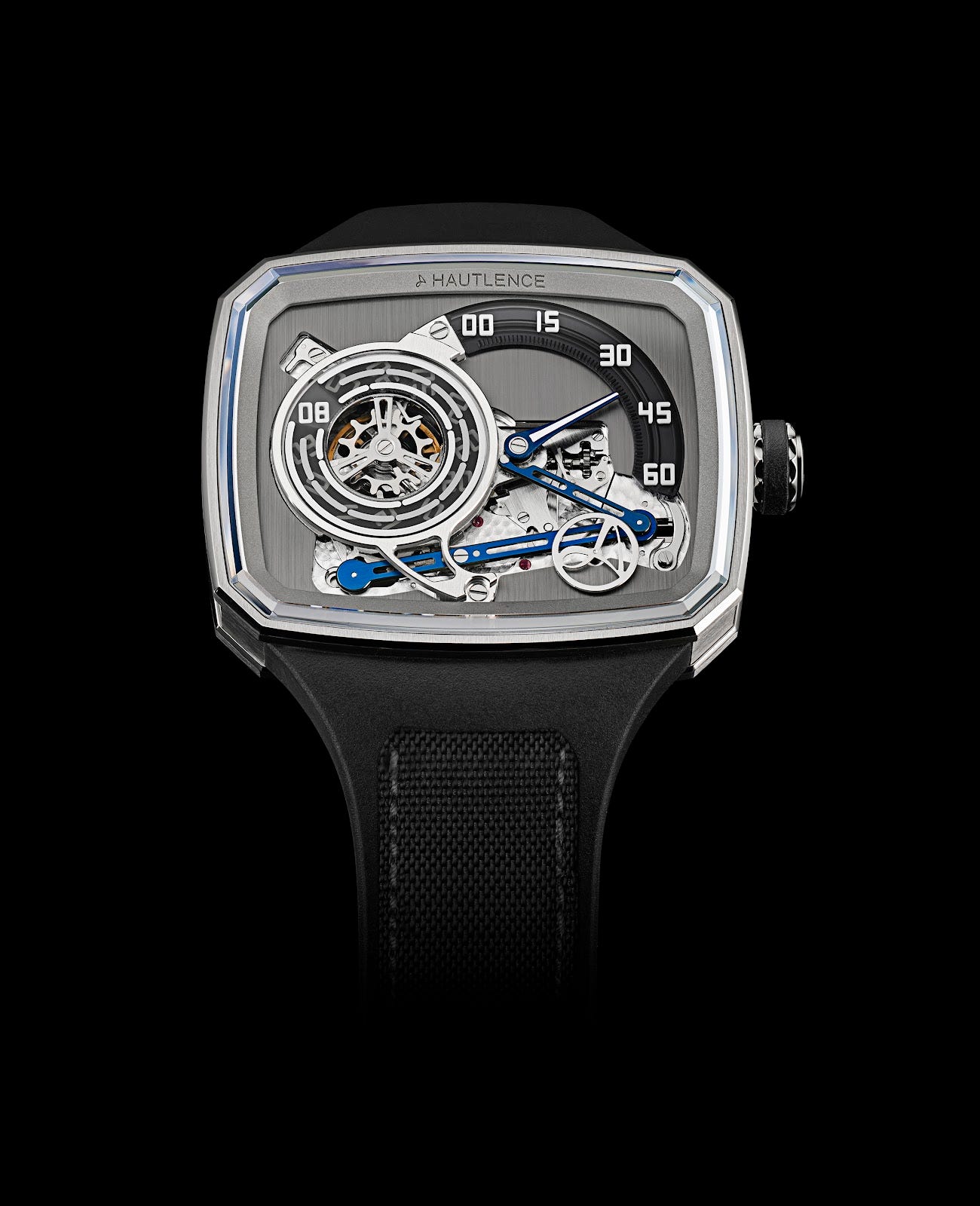Shaping Time: The Legacy and Craftsmanship of Form Watches
Form watches offer a distinctive aesthetic appeal, standing out from conventional round watch cases with their unique and often avant-garde designs.
Pioneers of Form
In 1904, Louis Cartier designed the Santos watch for his friend aviator Alberto Santos-Dumont, who wished to have a watch that he could read easily while flying. At a time when wristwatches were already popular for women, the Cartier Santos became one of the first wristwatches explicitly designed for men. It was also one of the first wristwatches with a square case. The original Santos featured a conventional round movement encased within its distinctive square case.
A few years later, in 1917, during WWI, Cartier designed a second form watch: the Tank. Cartier named this watch because its rectangular shape was reminiscent of the silhouette of French WWI tanks. The watch featured a rectangular-shaped movement to match the shape of the case, a significant departure from the round movements typically used in wristwatches at the time.
Beyond Circles
The term form watches refers to watches with cases that deviate from the traditional round shape, for example:
Square
Rectangular
Tonneau or shaped like a barrel: these cases have curved sides and a rounded shape.
Cushion or rounded square shape: these cases combine round and square designs
Asymmetrical: these cases have irregular shapes
Oval: these cases have elongated round shapes
In the early days of form watches, manufacturers often adapted round movements to fit non-round cases (e.g., Cartier Santos). Given the complexities and costs associated with developing entirely new movements, this was a practical solution. Since then, advances in engineering and manufacturing have allowed for greater precision in movement design and the integration and miniaturization of form-fitting movements.
Today, the evolution of form-fitting movements continues with the incorporation of more complex shapes and functions. The Hautlence HLXX, with its TV-shaped case and jumping hours, is powered by the Hautlence A20 caliber, a movement specifically crafted to match the case's distinctive design (more below).
The Artistic and Investment Appeal of Form Watches
Several brands produced form watches during the Art Deco period of the 1920s and 1930s, an era celebrated for its emphasis on geometric shapes and bold, intricate patterns. This period's artistic and cultural significance adds a special allure to these watches, making them particularly appealing to watch collectors who value a blend of functionality and creative expression.
Due to the irregular shapes of their cases and movements, creating form watches requires significant technical expertise. Collectors highly prize the skills and ingenuity necessary to design and manufacture these intricate timepieces. Moreover, form watches are often produced in limited quantities, enhancing their rarity compared to traditional round watches.
The historical significance and unique designs of form watches frequently lead to an appreciation in value over time. This potential for value growth makes them attractive investments for collectors interested in the aesthetic and historical aspects and the financial benefits of acquiring such rare timepieces.
Icons of Innovation: Renowned Brands and Their Form Watches
Several watch brands are renowned for their contributions to the category of form watches. Art Deco style codes heavily influenced the examples below.
Revolution on the Polo Field: The Jaeger-LeCoultre Reverso
Jaeger LeCoultre introduced the Reverso in 1931 in response to a challenge from British polo players in India who needed a watch that could withstand the rigors of the sport. The reversible case was designed to protect the watch face from damage during matches. At a time when wristwatches were becoming more common, Reverso's inventive case design stood out as a novel solution to a practical problem, blending form and function seamlessly. As Jaeger LeCoultre still needed a movement that fit the original Reverso, they utilized a rectangular movement from Tavannes (caliber 064), adapted to fit within the rectangular shape of the case. The first form-fitting movement manufactured by Jaeger LeCoultre, which was suitable for the Reverso, came in 1933: Caliber 11 U.
Stainless steel Jaeger LeCoultre powered Reverso, circa 1933
Source: Jaeger “LeCoultre: A Guide for the Collector”, Zaf Basha
Jaeger LeCoultre Caliber 11, introduced in 1933
Source: Jaeger “LeCoultre: A Guide for the Collector”, Zaf Basha
A Leader's Timepiece: The LIP T18 Churchill
LIP introduced the T18 timepiece in 1935. It is famously associated with Winston Churchill, who was gifted a LIP T18 watch during his time as Prime Minister. The LIP T18 features a rectangular case with a simple and elegant design, reflecting the design trends of the early 20th century. The watch was known for its reliability and precision. The LIP T18 movement was also rectangular, designed to fit rectangular and tonneau-shaped watch cases.
The LIP T18 Churchill
Source: catawiki.com
The LIP Caliber T18
Source: catawiki.com
A Nod to the Past: The Girard-Perregaux Vintage 1945
Girard-Perregaux introduced the Vintage 1945 collection in the mid-1990s as a tribute to its historical models from the 1940s, with rectangular-shaped cases. The Girard-Perregaux Vintage 1945 movement is the in-house manual winding Girard-Perregaux caliber 3300, known for its reliability and fine craftsmanship. Caliber 3300 is not explicitly designed as a rectangular movement. Instead, it is a round movement adapted to fit various case shapes, including rectangular ones like the Vintage 1945. The adaptation is possible using a movement holder or custom-fitted parts that ensure a secure and precise fit.
The Girard-Perregaux Vintage 1945, 2024
Source: girard-perregaux.com
The Girard-Perregaux Caliber 3300
Source: girard-perregaux.com
Precision and Prestige: The A. Lange & Söhne Cabaret
The Cabaret was introduced in 1997 and powered by the in-house, manually wound caliber L931.3, designed to fit the rectangular shape of the case perfectly. The L931.3 is one of the few true rectangular form-fitting movements in modern watchmaking. In addition to a small seconds subdial typically located at the bottom of the dial, the Cabaret features the Big Date display, a hallmark of A. Lange & Söhne watches.
The A. Lange & Söhne Cabaret, white gold, with date, circa 2009
Source: langepedia.com
he A. Lange & Söhne's Caliber L931.3
Source: langepedia.com
Driving Distinction: The Vacheron Constantin Historique American 1921
Vacheron Constantin launched the Historique American 1921 in 2008 as a modern reinterpretation of a model initially produced in the 1920s for the American market. It features a distinctive cushion-shaped case, which is characterized by a square form with rounded corners. The dial is set diagonally within the case, displaying the 12 o'clock position at 1:30 on a conventional watch face. This design was intended for easy reading while driving, making it practical and unique. The watch is equipped with the in-house round manually wound caliber 4400 AS.
The Vacheron Constantin Historiques American 1921, Pink Gold, 2024
Source: vacheron-constantin.com
The Vacheron Constantin Caliber 4400 AS
Source: vacheron-constantin.com
Television Inspiration: The Hautlence HLXX
The Hautlence HLXX features a unique TV-shaped case with jumping hours and retrograde minutes. Inspired by locomotives, the dial presents a lever system that connects a snail-cam with a blued retrograde minute hand and a jumping-hour switching system, allowing them to advance simultaneously at the end of each hour.
Driving the choreography on the dial is the Hautlence A20 caliber, a form-fitting TV-shaped manual winding movement with which Hautlence began its adventure 20 years ago. The movement delivers 40 hours of power reserve using a single barrel, comprises 156 components, and is water-resistant to 100 meters.
The Hautlence HLXX, 2024
Source: hautlence.com
The Hautlence A20 caliber
Source: hautlence.com
Engineering Elegance
Engineering non-round movements brings difficulties, primarily around space optimization. Unlike round movements, which naturally fit within a round case, form-fitting movements require detailed planning to eliminate wasted space and ensure that all components meet exact tolerances and fit perfectly. Achieving such precision may involve specialized tooling and machinery.
Achieving water resistance in non-round cases is particularly challenging, requiring advanced gasket technology and meticulous assembly to maintain a consistent seal. Ensuring shock resistance also demands innovative solutions. Integrating aesthetic and functional elements, such as the dial design, with the case shape and movement configuration is crucial for the watch's overall harmony and readability. These challenges collectively contribute to higher costs and longer development times of form-fitting movements.
The Legacy and Innovation of Form Watches
The world of form watches is a testament to the relentless pursuit of innovation and artistry in horology. From the pioneering designs of Cartier's Santos and Tank to the sophisticated craftsmanship of A. Lange & Söhne's Cabaret and Vacheron Constantin's Historique American 1921, these timepieces showcase the harmonious blend of form and function.
Form watches symbolize individuality and elegance in an industry often dominated by tradition. They remind us that true innovation often comes from daring to deviate from the norm, embracing unique shapes, and reimagining what a timepiece can be. The legacy of form watches is not just in their distinctive designs but in their ability to capture the imagination and elevate the art of watchmaking to new heights.



